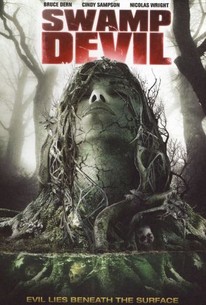ImporterExporter
"You're a boring old man"
NJ Swamp Devils (1)

Coach: Ken Hitchcock
Assistant/PP Coach: Bob Johnson
Vladimir Krutov - Sid Abel (C) - Guy Lafleur
Boris Mayorov (A) - Vyacheslav Starshinov - Bobby Bauer
Tony Leswick - Cooney Weiland - Mush March
Ab McDonald - Mike Ricci - Tim Kerr
Allan Stanley - Earl Seibert (A)
Vladimir Lutchenko - Flash Hollett
Vasili Pervukhin - Doug Young
George Hainsworth
Ben Bishop
PP1:
Tim Kerr
- Vladimir Krutov - Sid Abel - Guy Lafleur
Flash Hollett
PP2:
Boris Mayorov - Vyacheslav Starshinov - Bobby Bauer
Allan Stanley - Earl Seibert
PK1: Cooney Weiland - Tony Leswick - Allan Stanley - Earl Seibert
PK2: Viachelsav Starshinov - Mush Marsh - Vladimir Lutchenko - Doug Young
PK3: Vladimir Krutov - Sid Abel
Spares: Jack Evans (D), Steve Sullivan (F)
Estimated Ice Time
[TBODY]
[/TBODY]
[TBODY]
[/TBODY]
VS

'
Orillia Terriers (3)
Barry Trotz
Dean Prentice - Jonathan Toews "C" - Gordie Howe
Anatoli Firsov - Dave Keon "A" - Bernie Morris
Jack Marshall - Jason Spezza - Vladimir Tarasenko
Camille Henry - David Krejci - Bobby Schmautz
Wade Redden - Drew Doughty
Kevin Lowe "A" - Brent Burns
Keith Yandle - Jack Portland
Johnny Bower
Glenn Resch
Spares
Walt Buswell, D
Jaroslav Jirik, LW/RW
Buddy O'Connor, C
PP1 - Camille Henry - Bernie Morris - Gordie Howe - Brent Burns - Keith Yandle
PP2 - Anatoli Firsov - Jason Spezza - Vladimir Tarasenko - Drew Doughty - Wade Redden
PK1 - Dave Keon - Anatoli Firsov - Kevin Lowe - Jack Portland
PK2 - Jonathan Toews - Gordie Howe - Wade Redden - Drew Doughty
Coach: Ken Hitchcock
Assistant/PP Coach: Bob Johnson
Vladimir Krutov - Sid Abel (C) - Guy Lafleur
Boris Mayorov (A) - Vyacheslav Starshinov - Bobby Bauer
Tony Leswick - Cooney Weiland - Mush March
Ab McDonald - Mike Ricci - Tim Kerr
Allan Stanley - Earl Seibert (A)
Vladimir Lutchenko - Flash Hollett
Vasili Pervukhin - Doug Young
George Hainsworth
Ben Bishop
PP1:
Tim Kerr
- Vladimir Krutov - Sid Abel - Guy Lafleur
Flash Hollett
PP2:
Boris Mayorov - Vyacheslav Starshinov - Bobby Bauer
Allan Stanley - Earl Seibert
PK1: Cooney Weiland - Tony Leswick - Allan Stanley - Earl Seibert
PK2: Viachelsav Starshinov - Mush Marsh - Vladimir Lutchenko - Doug Young
PK3: Vladimir Krutov - Sid Abel
Spares: Jack Evans (D), Steve Sullivan (F)
Estimated Ice Time
| Forwards | ||||
| Name | ES | PP | PK | Total |
| Vladimir Krutov | 14 | 4 | 1 | 19 |
| Sid Abel | 14 | 4 | 1 | 19 |
| Guy Lafleur | 16 | 4* | 20 | |
| Boris Mayorov | 13 | 3 | 16 | |
| Vladimir Starshinov | 13 | 3 | 2 | 18 |
| Bobby Baeur | 13 | 3 | 16 | |
| Tony Leswick | 13 | 4 | 17 | |
| Conney Weiland | 13 | 4 | 17 | |
| Mush March | 13 | 2 | 15 | |
| Ab McDonald | 6 | 6 | ||
| Mike Ricci | 6 | 6 | ||
| Tim Kerr | 4 | 4 | 8 | |
| Total | 138 | 26* | 14 |
| Defensemen | ES | PP | PK | Total |
| Allan Stanley | 16 | 2 | 4 | 22 |
| Earl Seibert | 18 | 2 | 4 | 24 |
| Vladimir Lutchenko | 16 | 2 | 18 | |
| Flash Hollett | 14 | 5 | 19 | |
| Vasili Pervukhin | 13 | 1 | 1 | 15 |
| Doug Young | 13 | 3 | 16 | |
| Total | 92 | 9 | 14 |
VS
'
Orillia Terriers (3)
Barry Trotz
Dean Prentice - Jonathan Toews "C" - Gordie Howe
Anatoli Firsov - Dave Keon "A" - Bernie Morris
Jack Marshall - Jason Spezza - Vladimir Tarasenko
Camille Henry - David Krejci - Bobby Schmautz
Wade Redden - Drew Doughty
Kevin Lowe "A" - Brent Burns
Keith Yandle - Jack Portland
Johnny Bower
Glenn Resch
Spares
Walt Buswell, D
Jaroslav Jirik, LW/RW
Buddy O'Connor, C
PP1 - Camille Henry - Bernie Morris - Gordie Howe - Brent Burns - Keith Yandle
PP2 - Anatoli Firsov - Jason Spezza - Vladimir Tarasenko - Drew Doughty - Wade Redden
PK1 - Dave Keon - Anatoli Firsov - Kevin Lowe - Jack Portland
PK2 - Jonathan Toews - Gordie Howe - Wade Redden - Drew Doughty
